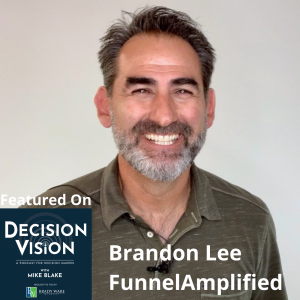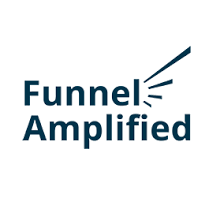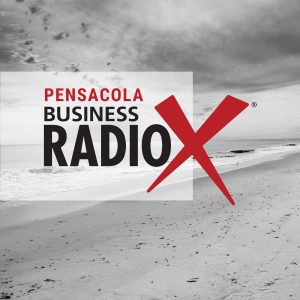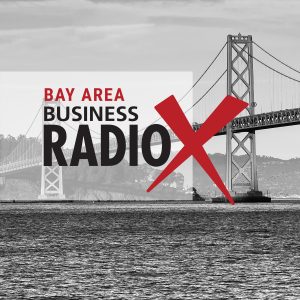Decision Vision Episode 134: Should I Sell to a SPAC? – An Interview with David Panton, Navigation Capital Partners
In 2020, roughly half of all companies which went public did so through a SPAC, or a Special Purpose Acquisition Company. How does a SPAC work, and what are the pros and cons of going public through a SPAC as opposed to the traditional IPO route? How risky are SPACs? David Panton, whose firm invests exclusively in SPACs, joined Decision Vision host Mike Blake to answer these questions and much more. Decision Vision is presented by Brady Ware & Company.
Navigation Capital Partners
Navigation Capital Partners (NCP) is an Atlanta-based private equity firm focused exclusively on investing in a diverse portfolio of Special Purpose Acquisition Companies (SPACs). The principals of NCP formerly founded and managed Mellon Ventures, the private equity investment partnership of Mellon Financial Corporation. With the backing of Goldman Sachs Private Equity Opportunities Fund LP, NCP acquired the private equity portfolio of Mellon Ventures in December 2006.
In 2019, NCP launched its SPAC Operations Group which builds on the NCP legacy of transforming relatively small, high-growth companies into medium-sized ones and selling them to larger private equity firms to take them to the next level. In the 15 years since its inception, NCP has invested $399 million in 51 portfolio companies, including nine SPACs.
Company website | LinkedIn | Twitter
David Panton, Managing Partner, Navigation Capital Partners

David Panton is a Managing Partner of Navigation Capital’s SPAC Operations Group, which makes equity investments in Special Purpose Acquisition Companies (SPACs).
David is also a co-founder of Navigation Capital Partners LP, an Atlanta-based private equity firm that has made growth and buyout investments in middle-market operating companies. In partnership with Goldman Sachs, its portfolio has included investments in 40+ operating companies representing equity investments (including co-investments) of approximately $800 million.
David is also the Chairman of Panton Equity Partners, a private family office, which he founded in 2012, and is an Adjunct Professor in the Faculty of Finance at Emory University’s Goizueta Business School. David has served as a Board Member on over 15 companies, including Brand Bank (sold to Renasant Bank), Track Utilities (sold to CIVC Partners), SecureWorks (sold to Dell Technologies), and Exeter Finance (sold to Blackstone).
David is a co-founder and former Chief Strategy Officer of American Virtual Cloud Technologies (Nasdaq: AVCT), which previously raised $310 million in July 2017 as Pensare Acquisition Corp., and completed an acquisition of Computex Technology Solutions in April 2020. AVCT is a portfolio company of SPAC Opportunity Partners LP.
Between 2003 and 2006, David was a Vice President at Mellon Ventures (now Navigation Capital Partners), a $1.4 billion private equity firm, where he focused on growth capital and buyout investments. Previously, he co-founded and served as Managing Director of Caribbean Equity Partners, a private equity firm focused on investments in the Caribbean and Latin America. Prior to that, he was an Associate at Morgan Stanley in New York City, where he focused on mergers and acquisitions in Latin America and the Caribbean.
David also served as CEO of CMP Industries, a publicly traded company in Kingston, Jamaica, and is a former Senator in the Upper House of Parliament in Jamaica. David was named by Buyouts Magazine as “One of Eight Buyout Pros Under 40 to Watch” in 2009 and by the Atlanta Business Chronicle as one of the “40 Under 40” Rising Stars in 2011. He is a member of the Atlanta Chapter of the Young Presidents Organization (YPO) and is a former member of the Atlanta Group of Tiger 21 and Leadership Atlanta (Class of 2012). He is Chairman of the Jamaican-American Chamber of Commerce of Atlanta, a former member of the Board of the Michael C. Carlos Museum of the Arts, and is a former Trustee of Holy Innocents’ Episcopal School in Atlanta, GA.
David holds a Master Professional Director Certification from the American College of Corporate Directors. David received a Doctorate in Management Studies from Oxford University, where he was a Rhodes Scholar, a J.D. (with honors) from Harvard Law School, where he was elected President of the Harvard Law Review, and an A.B. (with high honors) in Public Policy from Princeton University.
Born and raised in Jamaica, he resides in Atlanta, GA.
Mike Blake, Brady Ware & Company

Michael Blake is the host of the Decision Vision podcast series and a Director of Brady Ware & Company. Mike specializes in the valuation of intellectual property-driven firms, such as software firms, aerospace firms, and professional services firms, most frequently in the capacity as a transaction advisor, helping clients obtain great outcomes from complex transaction opportunities. He is also a specialist in the appraisal of intellectual properties as stand-alone assets, such as software, trade secrets, and patents.
Mike has been a full-time business appraiser for 13 years with public accounting firms, boutique business appraisal firms, and an owner of his own firm. Prior to that, he spent 8 years in venture capital and investment banking, including transactions in the U.S., Israel, Russia, Ukraine, and Belarus.
LinkedIn | Facebook | Twitter | Instagram
Brady Ware & Company
Brady Ware & Company is a regional full-service accounting and advisory firm which helps businesses and entrepreneurs make visions a reality. Brady Ware services clients nationally from its offices in Alpharetta, GA; Columbus and Dayton, OH; and Richmond, IN. The firm is growth-minded, committed to the regions in which they operate, and most importantly, they make significant investments in their people and service offerings to meet the changing financial needs of those they are privileged to serve. The firm is dedicated to providing results that make a difference for its clients.
Decision Vision Podcast Series
Decision Vision is a podcast covering topics and issues facing small business owners and connecting them with solutions from leading experts. This series is presented by Brady Ware & Company. If you are a decision-maker for a small business, we’d love to hear from you. Contact us at decisionvision@bradyware.com and make sure to listen to every Thursday to the Decision Vision podcast.
Past episodes of Decision Vision can be found at decisionvisionpodcast.com. Decision Vision is produced and broadcast by the North Fulton studio of Business RadioX®.
Connect with Brady Ware & Company:
Website | LinkedIn | Facebook | Twitter | Instagram
TRANSCRIPT
Intro: [00:00:01] Welcome to Decision Vision, a podcast series focusing on critical business decisions. Brought to you by Brady Ware & Company. Brady Ware is a regional full-service accounting and advisory firm that helps businesses and entrepreneurs make visions a reality.
Mike Blake: [00:00:22] Welcome to Decision Vision, a podcast giving you, the listener, clear vision to make great decisions. In each episode, we discuss the process of decision making on a different topic from the business owners’ or executives’ perspective. We aren’t necessarily telling you what to do, but we can put you in a position to make an informed decision on your own and understand when you might need help along the way.
Mike Blake: [00:00:43] My name is Mike Blake, and I’m your host for today’s program. I’m a director at Brady Ware & Company, a full -service accounting firm based in Dayton, Ohio, with offices in Dayton; Columbus, Ohio; Richmond, Indiana; and Alpharetta, Georgia. Brady Ware is sponsoring this podcast, which is being recorded in Atlanta per social distancing protocols. If you like to engage with me on social media with my Chart of the Day and other content, I’m on LinkedIn as myself and at @unblakeable on Facebook, Twitter, Clubhouse, and Instagram. If you like this podcast, please subscribe on your favorite podcast aggregator, and please consider leaving a review of the podcast as well.
Mike Blake: [00:01:23] And before we start on that note, I’d like to take this opportunity to thank all of you who are listening to the program and are clearly telling other people about this program so that we can, frankly, help other people. I was delighted to learn last week that we have passed 27 million cumulative downloads of this program since launching it 30 months ago. And we’ve also actually passed a very important milestone a while ago, we’re at 40,000 downloads for each new episode within the 30 days of publishing a new episode, which puts us firmly in the top one percent of all business related podcasts.
Mike Blake: [00:02:03] And I cannot thank you enough, not just for downloading, but clearly you’re listening, clearly you’re telling other people that they would benefit from listening to this program. And this is why I do it. You know, we don’t have commercials on this. I’m not monetizing this in any way. This is just a way that we, as the Decision Vision team, give back and try to share some wisdom, and some advice, and counsel, maybe even some infotainment along the way to help you become better or more confident in the decisions that you’re making. And so, I just like to take a moment to thank you for all your support of the program, and I hope that we’ll justify your support in the future.
Mike Blake: [00:02:45] I’d like to thank Brady Ware, who has given me the time and resources to do this podcast. I could not do it without them. I could not do it without Business RadioX. And, of course, we couldn’t do it without all of our guests. Because if I were doing this podcast by myself, it would be two episodes, probably the intro and then the final episode, because I don’t know enough to carry a show on my own. So, without the guests who donate their time and expertise throughout the program, this really wouldn’t be much of a program at all.
Mike Blake: [00:03:14] So, without further ado, I’ll introduce today’s topic, which is, Should I sell or form to a Special Purpose Acquisition Company or SPAC? And you may be familiar with SPACs or you may not, it really depends on how tied you are with the financial markets. And we don’t do a lot of hardcore finance on the program. But every once in a while we do because there will be something that comes up that, I think, warrants us covering it. If nothing else that you’re aware of what that financial vehicle, that financial decision is out there, and you may find yourself with that decision.
Mike Blake: [00:03:52] And so, our guest will come on and tell us exactly what a SPAC is. But if you found that you’ve been hearing about them a lot, it’s not by accident. You know, a SPAC is, in effect, a poor person’s IPO. Some people say a rich person’s IPO. But our guest will talk about that. But in 2016, there are about 20 SPACs, Special Purpose Acquisition Companies, that were formed in 2016. And in 2020, there are over 400, with an average size of $300 million in capital raised per transaction.
Mike Blake: [00:04:24] That’s a big deal, right? Four hundred times $200 million will be $12 billion of capital. That’s a lot of capital out there. And that’s why you’re hearing a lot about it. And even if you’re not necessarily going to be taking a company into an exit, into a public liquidity event or quasi public liquidity event, you probably still want to know what a SPAC is. And you may find yourself in the position of asking yourself, “Is this something that we could do with our company?” And finding out whether or not that’s a realistic or desirable path is what we’re all about here on the Decision Vision program, is to help you understand what it is and what kind of decision might you have to make, and what is a good framework in which you might make that decision.
Mike Blake: [00:05:08] So, joining me today is our guest, David Panton, who is a Cofounder of Navigation Capital Partners LP. They’re long standing, one of the premier investment banking, private equity, and merchant banking houses in Atlanta. They’ve been around since I’ve been in Atlanta, which is at least 20 years. And they’ve made growth and buyout investments in middle market and operating companies. In partnership with Goldman Sachs, their portfolio has included investments in over 40 operating companies representing equity investments of approximately $800 million.
Mike Blake: [00:05:39] David is a managing partner of Navigation Capital SPAC Operations Group, which makes equity investments in the special purpose acquisition companies. In 2019, Navigation Capital Partners or NCP launched their SPAC Operations Group, which builds on their legacy of transforming relatively small, high growth companies in the medium sized ones and selling them to larger private equity firms to take them to the next level. In the 15 years since its inception, NCP has invested $399 million dollars in 51 portfolio companies, including nine SPACs. And for more information, you can visit navigationcapital.com.
Mike Blake: [00:06:18] In addition to his professional roles, David is a former senator in the Upper House of the Parliament in Jamaica. He was named by Buyouts Magazine as one of the Eight Buyout Pros of Under 40 to Watch in 2009 and by the Atlanta Business Chronicle as one of its 40 Under 40 Rising Stars in 2011. He is a member of the Atlanta Chapter of the Young Presidents’ Organization and is a former member of the Atlanta Group TIGER 21 and Leadership Atlanta Class of 2012. The second best class ever, second only to the Class of 2014. And if you’re in the Leadership Atlanta Group – he’s laughing – you know exactly what that means.
Mike Blake: [00:06:53] David received a Doctorate in Management Studies from Oxford University, where he was a Rhodes Scholar; a JD with Honors from Harvard Law School, where he was elected president of the Harvard Law Review; and an AB with High Honors in Public Policy from Princeton University. David, welcome to the program.
David Panton: [00:07:09] Thank you so much, Mike. Great to be here.
Mike Blake: [00:07:11] So, David, SPAC is a fairly technical concept. And in some ways, I think kind of a subtle one. So, I’d like to ease our audience in a little bit. Can you describe what a SPAC is?
David Panton: [00:07:25] Sure. So, let’s start with the acronym SPAC, it stands for Special Purpose Acquisition Company. And that describes in broad part, so let’s just break it down. Well, let’s start with the company part. So, the first is it’s a company. So, it’s not any newfangled instrument. It’s not an NFT. It’s not bitcoin. It’s just a company. And it’s a company that is publicly traded.
David Panton: [00:07:55] So, typically, you will have a sponsor for a SPAC, Special Purpose Acquisition Company. They will form a company. That company will be taken public. And through the traditional process, known as the IPO process, Initial Public Offering. So, a sponsor pay for the costs of taking a company public. The company is now public. But unlike traditional public companies which have operations, SPAC has one asset, and that asset is cash. So, it raises capital. As you said, the average amount raised in SPAC so far this year is around 300 million.
David Panton: [00:08:35] And by the way, let me just correct you on the math there. You mentioned 400 SPACs, 300 million. It’s not 12 billion. It’s 120 billion.
Mike Blake: [00:08:43] I knew it. I thought it was off by a zero and I couldn’t do a lot of talking in the microphone. So, thank you for bailing me out there.
David Panton: [00:08:49] So, there is 120 billion raised in SPAC. So, these are public offerings by these companies, which raise so far this year $120 billion. So, they have one asset which is cash. Then, the SPAC sponsor has a certain time period, which is usually 24 months, but it could be 18 months, it could be 12 months, in which to find an operating company. So, think of a SPAC as a blank check company, it’s what it’s known as, or a special purpose vehicle with cash, whose objective is to find an operating company that can acquire or merge into within a certain period of time, typically 24 months or two years.
David Panton: [00:09:31] At the end of that two year period, if the sponsor has not found a company, then this is a very unique element of SPAC, which really doesn’t exist in any other investment category that I know of. The sponsors have to give the money that was invested by the investors in the IPO back to the investors. That’s known as a redemption. So, there’s a redemption rite that investors in SPAC IPOs have.
David Panton: [00:09:57] When the company is found, the sponsors have to go back to the investors and get it approved by the investors in the SPAC IPO or whoever the shareholders are in the company at that time. And when that is done, if the shareholders approve the deal – and the good news is that happens almost all of the time – then the operating company, which is now merged into the SPAC becomes the new publicly traded company.
David Panton: [00:10:24] So, the last thing I’ll say on this is that, effectively what a SPAC is, is a company with cash with a certain time period in which to merge with an operating company, typically a private company, that makes that private company public. So, it’s a mechanism of doing effectively a reverse merger of a private company into the public SPAC that was raised. And then, after that, that company is straight way public company.
David Panton: [00:10:55] So, Hostess, as an example – we’ve all seen Hostess Twinkies – was a company owned by a private equity firm. Someone set up a SPAC, another firm called Gores. That SPAC approached Hostess and said, “Hostess, we want to effectively take you public.” They negotiated a transaction, and Hostess did a reverse merger into the special purpose acquisition company. They changed the name to Hostess. And today, Hostess is just a publicly traded company. It was a mechanism for Hostess to go public.
Mike Blake: [00:11:27] I knew some of the Hostess story. I guess they must have been effectively bought out of bankruptcy to get into a SPAC?
David Panton: [00:11:35] So, I want to be clear on that. In fact, I don’t think a single SPAC has bought a company out of bankruptcy. So, I don’t want people to think that this is just a mechanism to buy companies out of bankruptcy. In fact, SPACs are not good for that. Hostess did go through a bankruptcy. They were bought by a private equity firm, actually two private equity firms. Those private equity firms are growing the company, and they were trying to exit from their investment. And a SPAC approached them and said, “Why don’t you merge your now rehabilitated company and growing company with less debt into a public vehicle?” And that’s what they did. And it’s actually even a very good investment.
David Panton: [00:12:15] Burger King, by the way, was also a SPAC. It didn’t go through a bankruptcy. Just a good company owned by a private equity firm. It was seeking a mechanism to exit or, actually, to facilitate liquidity.
David Panton: [00:12:28] And one important thing – and I think this may be important for your listeners who are all entrepreneurs, executives – the vast majority of SPACs, the shareholders of the company, the private company, become the majority shareholders of the public company. So, it really is largely a mechanism if you are the owners of a private company and want to go public, it’s just a mechanism of going public.
David Panton: [00:12:54] So, you have options if you’re a private owner. You could sell to private equity. You could go public in the traditional IPO process. Or if you want to exit, you could use a SPAC route. So, think of it as a mechanism if you’re the owner of a company of taking your company public, but through a SPAC, not through the traditional IPO process.
Mike Blake: [00:13:18] So, the way you described it is interesting. Let me come back to you. First of all, I guess one of the object lessons, any time you think of a Twinkie now you can think of a SPAC. It’s, “I’m eating Twinkies. Remember a SPAC is making that possible.”
David Panton: [00:13:29] Or if you’re eating a Whopper, that was a SPAC.
Mike Blake: [00:13:32] Or a Whopper. Exactly. You know, Whopper. Exactly. But the fact that the owners of the company themselves are providing the capital, is it fair to say in a way this is a mechanism for a company to kind of take itself public as opposed to making an offering to external shareholders and hoping that they buy?
David Panton: [00:13:53] Yes and no. And I do want to clarify one thing that you said. You said the owners of the company are providing capital. The SPAC is providing the capital. So, if you were an owner of a company, why would you choose a SPAC over a traditional IPO? Maybe that’s one way of thinking about it. And there are reasons why some companies go public through SPACs and there are reasons why they go through the traditional process.
David Panton: [00:14:18] Last year, in 2020, half of the IPOs in America or more than half were SPAC IPO. So, half of the cases, owners of companies chose the SPAC process over the traditional IPO process. And there are pros and cons of each, and let’s just go through them quickly.
David Panton: [00:14:35] The biggest advantage of a SPAC, number one, you actually are merging into an entity which, typically, has a board and has individuals in place who typically know that industry. So, most SPACs are industry focused. And there isn’t just an advantage, especially if you’re a smaller company that’s growing, and just having a strategic partner, and a board of directors or people who can add value to you.
David Panton: [00:14:59] That doesn’t apply in a traditional IPO. If you’re doing a traditional IPO, you’re just going public. I mean, you could add people to your board, but you don’t really have a strategic partner. That’s one advantage of a SPAC.
David Panton: [00:15:10] The second advantage is you have built in capital. And that capital is typically the capital that was raised in the IPO. Now, there’s a risk that that capital can go away. So, that’s a negative of a SPAC, which is the capital may be there or it may not be there. But the SPAC market has effectively created a way to ensure that the capital is there. And that mechanism is something known as a PIPE. So, when you think of SPACs – I know there’s lots of acronyms – Special Purpose Acquisition Companies, don’t think of SPAC without a PIPE. SPAC is on the front end, PIPE on the back end.
David Panton: [00:15:44] What does a PIPE stand for? PIPE stands for Private Investment in a Public Entity. And all that is, is a private placement at the time that the SPAC has identified a target company with which it wants to merge. And then, they go to investors, typically long term fundamental investors, in public companies to say, “Listen, why don’t you participate in this company and give us additional capital?” Or if not new capital, a backstop against the redemptions from the capital that was raised in the initial IPO.
David Panton: [00:16:16] And so, that gives some certainty because that capital is fully committed capital that the company which is going public through this SPAC process will actually have capital that’s needed. So, it is a mechanism for the owners of the company to either take some cash off the table because they want to get some cash and/or to have new cash going into the company on the balance sheet, which is more likely in most recent SPACs and most of the SPAC transactions that have occurred this year. So, it provides capital.
David Panton: [00:16:51] And then, the third advantage is certainty, more certainty than an IPO. In an IPO, you may or may not go public. It may or may not work. In a SPAC transaction, you’re negotiating a merger. And once you’ve negotiated that merger, and especially if you put a PIPE in place, there’s a very, very high likelihood the deal is going to get done. In the IPO market, it may happen, it may not happen.
David Panton: [00:17:18] And one of the reasons actually that SPACs boomed last year is that the IPO market, because of what happened with COVID, et cetera, sort of declined. The market was jittery. But because SPACs have committed capital or have a pool of capital available to them and they do these mergers, it made it easier for SPAC transactions to get done.
David Panton: [00:17:42] And then, the final advantage, I would say, about a SPAC IPO versus a traditional IPO – and there are several others, but these are the primary ones. I mean, speed is another reason. You can probably do a SPAC IPO in a much shorter time than the traditional IPO – the last one I would focus on is the ability to set the valuation of the company.
David Panton: [00:18:10] And what I mean by that is, you’ve probably seen that when other companies have gone public, you’ve seen that they go public and save $10 a share. And then, you hear that there was a big pop and it went from 10 to 20, or 30, or 40. And that sounds great for the investor, but it’s actually terrible for the owners of the company. Because if they could have gone public at 40, then they should have gone public at 40.
Mike Blake: [00:18:33] The last 30 bucks a share on the table.
David Panton: [00:18:35] They left 30 bucks a share on the table. And that is a huge, huge issue. In a SPAC transaction, you basically value it at, say, 40 or 30 or whatever the number is, and that’s the price. It’s very, very rare that you see this big pop. So, you’re able to maximize the valuation of a company in a SPAC transaction because it’s a negotiated transaction with another party and a merger as opposed to just going to the market.
David Panton: [00:19:01] And, you know, listen, I work with investment banks. I love investment banks. I don’t want to say anything negative about investment banks. But investment banks are in the business of making money and they’re in the business of helping their friends. And the investment banks were the underwriters of IPOs and SPACs. So, we work with investment banks all the time.
David Panton: [00:19:19] They have, historically, gone and given IPO allocations to their friends and institutional investors that they like and said, “Hey, we’ll get you in at a certain price.” They’ll typically negotiate the price that’s relatively low because everyone wants the price to go up. And, therefore, the investors do very well. But the actual owners of the company, typically, leave a lot of money on the table in a traditional IPO, and SPAC IPOs avoid that. And that amount, by the way, billions and billions of dollars, so it’s not an insignificant consideration.
Mike Blake: [00:19:54] Yeah. I’ve been in the investment banking business and I know exactly what you’re talking about. I don’t disagree with it. I could easily divert the podcast that way, but maybe we’ll have you back on, we’ll talk about that in another episode.
David Panton: [00:20:06] That’s a different story.
Mike Blake: [00:20:08] But, you know, you brought something up that I want to make sure that I covered, which is, we’re hearing a lot about SPACs now, but they’ve actually been around for quite some time. They’re actually not a new vehicle. They’re just new to a lot of people. And granted, COVID has, perhaps as so many things, given a lot of momentum to things that are already taking place. But why have SPACs suddenly become so popular in the last few years?
David Panton: [00:20:36] Well, that’s a great question. My view – and this is just my view – is that it really came down to one transaction. And that one transaction was a SPAC raised by two of the legends in the SPAC world, a guy named Jeff Sagansky and Harry Sloan. And they raised the SPAC called Diamond Eagle Acquisition Corp. Almost every SPAC has the name acquisition corp. at the end. They raised it in May of 2019, and they raised $400 million. Their underwriter was Goldman Sachs, where Goldman Sachs helped raise $400 million from a large number of institutional shareholders.
David Panton: [00:21:16] The investors in Diamond Eagle, who invested the $400 million received units. Those units – which is one of the differences between a traditional IPO and a SPAC IPO. You’ll see units rather than just shares – include a bundle of securities, which includes typically one share. And then, very importantly, they received a warrant or a-half-a-warrant or a-third-of-a-warrant. That warrant is another security like a share, which gives them a right to buy shares in the future.
Mike Blake: [00:21:51] It’s an option effectively.
David Panton: [00:21:52] It’s an option. That’s exactly right. So, an option to participate if the price goes up in the future. And, typically, almost all SPACs go public at $10 per share. And the options are typically priced at 11.50. So, that’s what’s known as the strike price of the option. So, if the stock goes up to 11.50, then the warrant/option is valuable. And if the price goes down, it doesn’t have value.
David Panton: [00:22:16] But because there’s potential value, these options/warrants trade. They trade separately from the shares. There’s an option market. You can buy these options. A lot of hedge funds invest in these options. And they have a value, and they’re typically around $0.50. So, $0.50 on a $10 investments by the investors in the IPO works out to be a five percent return. It’s pretty good, actually, especially in a market where interest rates are relatively low. And you still have the shares if the price goes up.
David Panton: [00:22:48] And, by the way, the vast majority of investors – which you should know and your listeners should know – in SPAC IPOs are hedge funds because this is a financial instrument. It’s not an operating company. And hedge funds love financial instruments.
Mike Blake: [00:23:05] Yes, they do.
David Panton: [00:23:07] Downside protection and upside potential. So, the investor is invested in Diamond Eagle. Majority of the investors were, in fact, hedge funds. They gave $400 million to Diamond Eagle. And within a very short period of time, they identified not one, but two companies that they could put together to take public. The two companies, one of them you would know probably fairly well, the other one you probably wouldn’t know. The one you would know is called DraftKings, and DraftKings is an online gaming company.
Mike Blake: [00:23:42] Daily fantasy sports.
David Panton: [00:23:44] Exactly right. Fantasy sports, et cetera. And as you know, many states are decriminalizing online gaming. It used to be illegal, now less so. And there was a Supreme Court case which has made it almost impossible to ban online gaming. They’re a huge, huge business. Unprofitable business, by the way, but fast growing. It wasn’t that large. We’re talking about 300 million in revenues. They wanted to put it together with another company. And the name of that company is called SBTech, which actually was an Israeli company, which provided the technology platform for gaming, not just for DraftKings, but for other companies as well.
David Panton: [00:24:25] The combined two companies had about 400 million in revenues, maybe a little less. And were valued at $3 billion, a very high multiple of revenues. They’re both unprofitable. But the reason they have that valuation is because of the growth rate. They announced the deal in December of 2019. And the price didn’t move much from $10. As most announcements, price moves a little bit but not much. They then went onto the market and went out to long term investors and said, “You should invest in DraftKings.” And a lot of people were interested in it.
David Panton: [00:25:04] And they had an analyst day, which very few companies have done and then they did something. And one huge difference between SPACs and a traditional IPO – I should have said this earlier actually – is that in a SPAC IPO, you are able to provide forward looking projections, which you cannot do in a traditional IPO. So, in the case of DraftKings, even though the company was unprofitable today, they could say, “We are planning to grow the company to a billion dollars of EBITDA in the future.” And that’s what they said. Now, if you did that in a traditional IPO, the SEC would say, “No, no, no. You can’t do that. You can’t say what you’re going to do in the future.
Mike Blake: [00:25:46] Which is bizarre, by the way.
David Panton: [00:25:48] It’s little bit bizarre.
Mike Blake: [00:25:50] It’s bizarre they’re not likely to do that, by the way. But go ahead.
David Panton: [00:25:52] You know, you’re right, it is a little bit bizarre and it really is just a result of a loophole, right? And the loophole is that, a SPAC is really a merger, not an IPO. And if you’re doing a merger, you have to show the numbers that you are basing the merger on to all the investors. So, you’re right, it is a little bit unusual.
David Panton: [00:26:12] So, anyway, they put these projections and the deal closed in April of 2020. Now, understand, in January 2020, there was no huge upswing in SPACs. It didn’t happen in February. It didn’t happen in March. It didn’t happen in April. When DraftKings was announced and closed, the deal closed in April – so it was announced in December of 2019, closed in April of 2020 – the stock price doubled from $10 to $20. It was the first time that a SPAC at close had doubled in price. It never happened before because of that certainty issue I spoke about.
David Panton: [00:26:49] So, all the investors who had invested less than a year before, who had warrants, saw that the value of their investment, $10, was worth almost $30 because of the warrant. So, the price went from 10 to 20, so the shares were worth two times. And then, you add the warrants, they were worth close to $10 dollars. That’s another $10, almost $30. So, in less than a year, investors in a public security made three times their money.
David Panton: [00:27:14] And if it had not done well, they would have gotten their money back plus a return. And a lot of investors woke up to the fact that, hold on a second, there is an instrument out there where you can make three times your money in less than a year with basically no or very little downside risk. Where do we get into this game?
David Panton: [00:27:36] And in May and then in June, you saw an uptick, a number of people getting into the space. And so, you saw a very significant growth. And so, we went from in 2019 only about 14 billion raised, to 2020 over 80 billion or close to 80. And then, in 2021, this year, in the first quarter we did over 100 billion and we’re now at 120. Now, I should point out this was too much money, too fast, too soon.
David Panton: [00:28:09] And there’s been a significant correction over the past few months. And so, the amount of new offerings in SPACs has diminished quite significantly. Last week, there were about six. So, the number has come down, but they’re still, as you pointed out, over 400 SPACs that have gone public this year that have raised over $120 billion. And so, lots of SPACs are out there. But I think it’s because of DraftKings, ultimately, where people saw that value.
Mike Blake: [00:28:39] So, you know, what you’re describing, I think, probably has a lot of people interested in a SPAC. They’re learning about it. They’re learning about the benefits. If I’m in a company right now, I own the company or I’m in the C-suite, I’m a CFO, how can I tell if my company is a good or viable SPAC candidate or not?
David Panton: [00:29:02] Now, that’s a great question. And I do want to be clear because most of what I’ve said is very positive. Like, the SBTech, actually, the majority owner today is a billionaire who just joined the Forbes list. The stock has gone significantly, I don’t know where it is today, but it went as high as $60 from $10.
Mike Blake: [00:29:23] I promise I’ll give you a chance to talk about risk. I have that question coming up. So, don’t worry.
David Panton: [00:29:27] Okay. We’ll talk about it. All right. So, the question is, how do you know whether you’re viable? Here is the best way to think about viability. The best way to think about viability, first issue is size. The reality is not everyone should be a public company. Small companies should not be public.
David Panton: [00:29:41] So, unfortunately, I’m sure a lot of your listeners who are entrepreneurs or executives in companies that are below a certain amount of revenue are unlikely to be good targets for a public company. You need a certain size, and that size typically is around $100 million of revenues or more. And the higher the better. Some people would argue that even a 100 million is too small. You need 200 million. You need 500 million. You need a billion.
David Panton: [00:30:09] Now, I do want to caveat that with one thing, which is that, there were many companies that have emerged into SPACs that had zero revenue at all. And why did that happen? And how did that happen? It happened because of the second reason after size, which is size of industry, what’s known as TAM. There are lots of acronyms in the SPAC world, so SPAC and PIPE, the next one is TAM. TAM stands for Total Addressable Market size.
David Panton: [00:30:40] So, there are certain industries which are very large and growing. Like, for example, the electric vehicle industry. We all know that at some point in the future, the vast majority of cars are going to be electric cars. That’s one of the reasons Tesla has a valuation that it does, which is staggering. It’s like bigger than all the major car companies, because they’re in the right industry, which is huge.
David Panton: [00:31:03] And there are EV companies, for example, that went public because people figured at some point they will grow. So, even though they don’t have the size to be, this is a bet on the future. And remember, I said that SPACs can show projections into the future, which traditional IPOs can’t. If you can show in five years or six years, you’re going to be a billion dollar company then people are willing to pay for that value today. So, the second is TAM.
David Panton: [00:31:28] The third is growth. You’ve got to show a high growth rate. So, if you’re in a traditional state industry, not such a great thing. You know, you want to be in an industry which is growing or your company within that industry is growing.
David Panton: [00:31:41] The fourth is margins. You want to show that you have attractive margins. And by margins, I mean gross profit margins and EBITDA margins, Earnings Before Interest, Taxes, Depreciation and Amortization, which is the most common metric that public companies trade on. Although many of these companies trade on revenues because they don’t have EBITDA.
David Panton: [00:32:01] So, if you’re thinking about going public, do you have a size either today in terms of revenues or visibility into revenues? If you’re in a large TAM, large Total Addressable Market, that you have growth historically or you think will happen in the future. And you have pretty decent margins today or you expect to have decent margins in the future. Those are the main elements sort of threshold questions.
David Panton: [00:32:27] And then, if you meet those threshold questions, you think you have the size and the growth rate to be attractive to public company investors because that’s what you need to have, then the most important variable is, do you have the numbers? Because you have to actually have the financial system in a SPAC. You have to do what’s known as – here’s another acronym. This is the longest one – PCAOB audit.
David Panton: [00:32:55] So, every private company that merges into a SPAC has to have, typically, two and oftentimes three years of PCAOB audits. What does PCAOB stand for? Well, you’re an auditor so you probably know or you’re in the space. It stands for Public Company Accounting Oversight Board. So, after the 2008 issues, the government set up, basically, a public-private partnership which is an oversight organization, the Public Company Accounting Oversight Board, which provides certain metrics on how accounting firms should audit publicly traded companies. And there are certain things that they have to do or cannot do. They have to be independent, et cetera. And they have to have certain financial systems in place in a company. And not all companies can meet the PCAOB requirements.
David Panton: [00:33:51] So, the final thing I’d say, you know, for especially the CFOs who are listening, is you’ve got to make sure that your systems are strong and your reporting system, the financial system, so that when you do an audit, which is required, that you can meet the PCAOB standards.
Mike Blake: [00:34:10] And generally speaking, PCAOB means that it’s going to be a national accounting firm. It’s not going to be your local two person CPA shop. And it’s going to be expensive and it’s going to be involved. Like, even my firm, we have 150 people, we don’t do PCAOB audits. It’s just a different skill set. It requires a different, different scale of personnel in order to do that competently.
David Panton: [00:34:33] That’s right. You’re absolutely right. It’s more expensive and there are only a few people who do it. And it’s a long difficult process.
Mike Blake: [00:34:42] So, I hinted on this a second, but I do want to give you a chance because I know you don’t want to oversell SPACs. What are the risks? Where can SPACs go wrong? Maybe you know of some cases where they have gone wrong and why?
David Panton: [00:34:57] Yeah. So, you know, the biggest negative of SPACs – and SPACs have critics. There are many people who don’t like SPACs – the biggest sort of criticism is related to what is known as the sponsor promote. So, people who invest in SPACs – and we invest in SPACs – we receive a very lucrative promote. And that promote is, typically, 25 percent of the amount of money raised. So, if you do a $100 million dollar IPO, you get 25 million in stock. And if you add the 25 million in stock to the 100 million, then that becomes 25 of 125, so it’s now 20 percent. So, it’s 25 percent pre-money, 20 percent post-money, so 20 percent fully diluted.
David Panton: [00:35:53] And that’s a very [inaudible] dilution to everyone. It’s a dilution to the company that you merge with, because there is these extra shares out there. It’s a dilution to public company investors as you go forward. And so, that dilution creates a misalignment of incentives, which is the second problem. So, there is a cost to SPACs, which is that you’re giving up a large percentage of shares to the sponsor, which is dilutive to the original owners. They don’t like it.
David Panton: [00:36:26] There are ways to fix that. You can negotiate to get some of those sponsor shares, which has happened in transaction. You can get the sponsor to give up some of those shares, which has happened. You can get the sponsor to put those shares into an earn out, which has also happened. In the vast majority of cases, there are some modification to that SPAC sponsor promote, which is quite significant. So, the biggest negative is the dilution associated with the sponsor promote.
David Panton: [00:36:50] And then, the second is this misalignment of interests. Because the sponsor is, basically, coming into a $10 stock at a fairly low price, around a-buck or a-buck-50, and it’s at $10. So, if the stock price falls from 10 to 6 or 7, they’re still making a lot of money. But for new investors who want to come in the company, they want the stock to go above 10, typically, if they come in at 10 or PIPE investors. And so, it does create a little bit of a misalignment of interest.
David Panton: [00:37:22] And so, understanding that is important. And so, the issue is not that it’s a bad thing per se. If you can get alignment of interest, if you can negotiate correct terms, if you’re an owner or an entrepreneur, then it’s a good deal. And that has happened many times, which is why, you know, half the time that has occurred.
David Panton: [00:37:43] The last thing I would say is that, there is an inherent challenge associated with SPACs in terms of investor participation. Remember I said that the vast majority of investors in SPACs are hedge funds. Hedge funds, for the most part, are short term oriented, financial metric driven. They’re not really interested for the most part in long term growth companies.
Mike Blake: [00:38:06] They’re overgrown day traders. Brought us about it, right? They’re overgrown day traders.
David Panton: [00:38:12] You said it. I didn’t. So, there is a real challenge in that your shareholder base, you know, SPAC is not the shareholder base you want for a company for the long term. You actually want long term fundamental investors. You want people like Fidelity, and Wellington, and T. Rowe Price, and Neuberger, and long term fundamental investors.
David Panton: [00:38:34] And there’s a challenge in shifting your investor base from the short term hedge fund oriented financial arbitrage guys into longer term players. And that process can be hard, difficult, complicated. And it can affect your price. One of the reasons that recently the number of SPAC exit transactions has declined is because of this very issue, which is that, the stock price of SPACs has not been that high because a lot of these hedge funds are dumping stocks in SPACs across the board, regardless of what it did.
David Panton: [00:39:11] So, even good companies, there’s dump in stock. Which is great for people like me who are like, “We’ll buy them.” But not so good for the owners of the company, et cetera. So, that third issue of the transition from short term investors to longer term investors is oftentimes a challenge.
Mike Blake: [00:39:28] Yeah. And I guess that also does create some short term volatility that may or may not be connected to the fundamentals of the company.
David Panton: [00:39:35] Correct. That’s exactly right. Whereas, if you do a traditional IPO, you’re almost 100 percent certain that the participants in that stock, the vast majority of participants, are long term fundamental. Not always. And we’ve seen – which is worth mentioning since you mentioned day traders – this Robin Hood effect. And I should also add that that Robin Hood effect was a part of the explanation for the increase in 2020.
David Panton: [00:40:00] So, Robin Hood, as you know, it’s an online site, effectively an app, I guess, where people can invest. People who typically didn’t have access to traditional brokerage accounts could invest easily online. And these are people who invested in GameStop, et cetera.
David Panton: [00:40:17] And what happened is a lot of people invested in SPACs. It became very hot. A lot of them lost money and they went away. So, easy come, easy go. And so, retail participation or the lack of retail participation then pulling back from the market has also contributed to some of the decline in the market. And, you know, do you want to be associated with that necessarily?
David Panton: [00:40:42] And, by the way, that doesn’t necessarily happen with SPACs only. It could happen with traditional IPOs. But because SPACs are already trading, you know, SPACs were more likely to be recipients of – what I call – hot money from retail investors under that Robin Hood effect. And that’s another issue that people should know.
Mike Blake: [00:41:05] So, I’ve been reading and hearing that the government, the U.S. government in particular, the SEC, is taking a hard look at SPACs and evaluating whether or not they require their own set of regulations, more stringent oversight or some combination of the two. Are you hearing the same thing? And if so, do you think that’s likely to actually happen? And if so, do you think that’s going to take sort of some of the momentum out of the SPAC movement?
David Panton: [00:41:37] Well, you know, the SEC has expressed concerns about SPACs and the rapid increase in SPACs. And the single biggest reason that SPACs declined in volume is because of an action taken by the SEC earlier this year, where they questioned how the SPACs were pricing their warrants, how they were treating their warrants from an accounting perspective. So, this is something you and I very eagerly can talk about.
David Panton: [00:42:05] But are these warrants equity or debt is basically the question. The vast majority of SPACs have treated those warrants as equity. Which sort of makes sense because they are, in fact, an equity instrument. But as a technical matter, they can be treated as debt because they are an obligation of the company that the company may have to pay for in cash. So, there’s very arcane rules around that.
David Panton: [00:42:30] And I actually don’t think the SEC cared very much. The SEC just wanted a mechanism to stop the rapid increase in SPAC IPOs. And by saying to every single SPAC out there, “You have to tell us how you’re treating your warrants, every single person.” It led to a chilling effect, where it slowed it down. It slowed the market down. And there are some people who said, “I just too much headache.” And maybe the SEC doesn’t like SPACs.
David Panton: [00:43:02] I have a very different view. I actually think SEC participation and regulation SPAC is a great thing. In fact, the example that I use is that, before 2015, SPACs were not really accepted by many law firms, by many investment banks. Goldman Sachs as an example, which is a very large underwriter of SPACs today, wouldn’t touch SPAC with a ten foot pole before 2015.
David Panton: [00:43:30] The SEC, basically, changed the rule. And that rule was that the right to get your money back before 2015 was tied to the vote on the transaction. So, if you wanted to get your money out of the trust account, if you’re an investor in the IPO or SPAC IPO, you have to vote against the transaction. If you voted no, you got your money back. So, that resulted in a lot of SPACs failing because people wanted their money back. And they were like, “I don’t care about the deal.” A lot of hedge funds got the money back.
David Panton: [00:43:58] The SEC said, “You should be able to get your money back no matter what, whether you vote yes or no.” And so, by separating the vote from the right to redeem, several things happened. One is the percentage of SPAC transactions that were approved shot up to 100 percent, and it’s been 100 percent since 2015. There’s not been a single transaction which has not been approved, which makes sense because whether you think it’s a good deal or a bad deal, you want it to happen just to have the option if the price does go up.
David Panton: [00:44:30] Two is the failure rate has fallen. So, the number of SPACs which have failed has dropped dramatically. In fact, in the last two years, it’s been zero percent. Now, that’s going to increase. And I want to be clear on that, and that’s a risk in the future because there’s too many SPACs and too many people who should not be doing SPACs that are not going to find a deal in two years and they’re going to fail. So, the failure rate is going to increase. But for the past two years, it’s been very low. And since 2015 it’s under four percent.
David Panton: [00:44:55] The third thing that happened is that new people came into the space, people like Goldman Sachs and others who wouldn’t touch SPACs. So, today, SPACs are a well-established class. The SEC is responsible for that, in my mind. And I think protecting investors is a good thing. There have been a couple SEC actions this year. One was a finding of a SPAC who was a cannabis SPAC that I know they’re going to buy a space company owned by some Russians. The the U.S. Government didn’t approve Russians owning a space company. And the the SEC said, “You got to be diligent. You should have known this was a risk.” The nationality, which is like, “Duh. Of course, you should have.” And they were appropriately fine.
David Panton: [00:45:41] And so, the SEC is acting against bad actors, in my mind. And that’s a good thing because they’re acting against bad actors. It takes out the bad actors and leaves good quality people. So, there is a flight to quality. So, I believe that, yes, the SEC regulation oversight is going to happen and will continue to happen, and they’re going to ask for greater disclosure. But I think that’s all a good thing because by protecting investors, if you have high quality management teams buying high quality companies, that is a good thing. You shouldn’t have to be worried. The people who should be worried are the ones who are not doing the right thing.
Mike Blake: [00:46:17] I think we can see examples where the government stepping in to regulate actually does add legitimacy to a particular transaction or asset class. I think the government paying a lot more attention is starting to regulate cryptocurrency, and nonfungible tokens, and so forth, I think, has actually helped those two asset classes, again, if you bother to regulate it, then it must be real.
David Panton: [00:46:47] I will say one very quick thing, just a factual point. So, there is a firm called Pershing Square, which did the largest SPAC app. They raised the $4 billion SPAC. And they were recently sued by a former commissioner of the SEC and a very well-known law professor, who said that SPACs effectively – I mean, this is my jargon here – is a violation of an act known as the Investment Company Act. That a SPAC really should be regulated under the Investment Company Act. And they’ve filed the action against Pershing Square saying that he was effectively engaged in fraud.
David Panton: [00:47:28] For the first time that I’ve ever heard of, almost 50 law firms got together and wrote a letter to the SEC to say that that argument was nonsense. It was balderdash. It doesn’t make any sense that SPACs are a different investment category, are a separate investment category, they do not fall under the Investment Company Act, and that the legal theory behind that was unacceptable. And these almost 50 law firms are the largest law firms in the world and, certainly, the largest in the United States.
David Panton: [00:48:04] And what that did was, that reaffirms, in my mind, the institutionalization and establishmentization of SPACs. Almost every major investment bank in the United States – in fact, every major investment bank, I don’t think of any – has a SPAC desk. Every major law firm represent SPACs in some capacity. I mean, SPACs are here and they’re here to stay. They’re a very real and valuable mechanism for helping private companies go public. Can they be improved? Sure. Can we improve investor protection? Sure. Can we improve disclosure? Sure. Will that happen? Absolutely. Am I glad it’s going to happen? Yes, because it strengthens it.
David Panton: [00:48:48] But SPACs are not bitcoin. Which sort of like, what’s the backing? And they’re not NFTs. They’re not cryptocurrency. This isn’t some unique, weird thing. This is just a publicly traded company that’s helping a private company go public.
Mike Blake: [00:49:05] We’re talking with David Panton, and the topic is, Should I form or sell my company to a Special Purpose Acquisition Company or SPAC? David, we’re very grateful for the time that you’ve given us. I just have time for just a couple more questions and I’ll let you get back to helping other people with SPACs and other transactions.
David Panton: [00:49:24] One question I wanted to make sure to get to is, what is the timeline for a SPAC looks like? If I’m leading a company, I decide that I want to go down the road, and I think that my company qualifies in terms of revenue and TAM and so forth, what does a timeline look like from deciding I want to do a SPAC to actually executing one?
David Panton: [00:49:45] Oh, that’s a great question. So, one of the advantages that I mentioned earlier about SPAC versus a traditional IPO is the speed. That you can actually do a SPAC in a shorter time period than a traditional IPO.
David Panton: [00:49:58] There is a company here in Atlanta called Intercontinental Exchange, ICE. They own a company, actually a crypto company, I guess, or a crypto exchange called Bakkt, B-A-K-K-T. And it was a subsidiary. They’ve had investments from all the folks. And they’re trying to decide what to do with it. And a SPAC approached them and said, “Let’s take it public.” And they said, “Oh, that’s interesting.” And from the day they were approached to the day when they announced a deal was less than three months.
David Panton: [00:50:25] So, in three months, they were able to do their PCAOB audits. They were able to negotiate the deal, structure the deal, get it done, which is unheard of in the traditional IPO world. Traditional IPOs take a year or two years from beginning to end. Now, three months is on the the shortest end of the spectrum. I can’t imagine a SPAC deal from beginning to end being done less –
Mike Blake: [00:50:52] Well, the result is not typical.
David Panton: [00:50:54] That’s right. Not at all typical. What is more typical is four months, five months, six months, seven months. It could take as much as a year. But in SPACs, I would say three to six months is a reasonable time in order to get everything done. Because, remember, they’re on a clock. They typically have 24 months in which to do a deal. So, there’s a huge incentive to move quickly. And as a result, that is one of the advantages. And so, timing, I’d say, minimum three months. It could be as much as a year, more likely six to eight months.
David Panton: [00:51:25] And in terms of activity, what needs to be done, is really focus on making sure that these PCAOB audits are done is the most important element. But, also, putting together your projections and, you know, being able to tell the story of the business.
Mike Blake: [00:51:44] So, one question I’m very curious about is, celebrities and high profile investors seem to like SPACs. Why is that? Is that a fashion thing? Is it particularly well suited to very high net worth individuals? Why is that?
David Panton: [00:51:59] It’s a great question. I can’t say for sure why that is. But here is my answer. One is that, actually, SPACs are a relatively easy way to get into the capital markets. With a relatively small amount of money, the sponsor capital can be $100 million, $2 or $3 million. You’re able to be the CEO of a publicly traded company, which is $100 hundred million or $200 million dollars to invest.
David Panton: [00:52:35] And let me tell you what’s wrong with having $200 million to invest. Not a single thing. So, if you can afford to do it, you know, that makes a lot of sense. And a lot of celebrities have a few million dollars, which they can leverage. So, they like the leverage ability. They like the relatively low cash. And then, of course, the return is huge. You’re investing a few million dollars and you’re getting a huge chunk, so returns make sense.
David Panton: [00:53:00] And then, I’d say the final thing is that, there is a proven track record of wealth creation in public companies through celebrity participation. So, in the DraftKings example I told you earlier, one of the things they did was after they went public, they brought on as an advisor a guy by the name of Michael Jordan. Who, if you think about sports and gambling, the best known spokesperson who’s really known for gambling, it’s Michael Jordan. So, Michael Jordan being associated with the stock literally went up 20 or 30 percent by his announcement.
David Panton: [00:53:40] So, celebrities actually do add value. And there are other examples, Weight Watchers brought on Oprah Winfrey, stock went up. You know, there have been a number of celebrities associated with brand. Maybe look at people like Rihanna who has Fenty, the value of Fenty is very high because of her celebrity status. P. Diddy has Ciroc vodka, which used to be number 10 or 15 vodka. Now, it’s a top three vodka because of P. Diddy’s celebrity status.
David Panton: [00:54:11] So, celebrity status does actually add significant value or can add significant value to certain products and certain companies. And there is value in that. So, you’re able to not just get the financial returns because investing relatively little and getting the upside of the sponsor promote, but you’re also able to leverage your status to, in theory, generate even more returns because of the celebrity status. So, that’s my thesis.
Mike Blake: [00:54:42] David, we could go on a long time. SPACs are obviously very complicated. They’re very in depth. But there’s only so much free advice I can impose on you to give to our listeners. You know, there are probably questions we didn’t get to or questions that we could have gone into more depth on, if one of our listeners wants to contact you for more information about this, maybe they’re interested in selling imto a SPAC, can they contact you? And if so, what’s the best way to do so?
David Panton: [00:55:09] Yeah. Absolutely. And the best way to contact me is by email. And it’s dpanton, D as in David-P-A-N-T-O-N, P as in powerful-A as in athletic-N as in nice-T as in tall-O as in outstanding-N as in nice, dpanton@navigationcapital.com.
Mike Blake: [00:55:28] I like that. That’s going to wrap it up for today’s program. And I’d like to thank David Panton so much for sharing his expertise with us.
Mike Blake: [00:55:35] We’ll be exploring a new topic each week, so please tune in so that when you’re faced with your next business decision, you have clear vision when making it. If you enjoy these podcasts, please consider leaving a review with your favorite podcast aggregator. It helps people find us that we can help them. If you’d like to engage with me on social media and with my Chart of the Day and other content, I’m on LinkedIn as myself and @unblakeable on Facebook, Twitter, Clubhouse, and Instagram. Once again, this is Mike Blake. Our sponsor is Brady Ware & Company. And this has been the Decision Vision podcast.
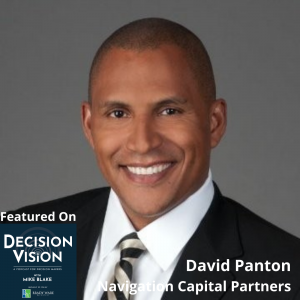

 Jonathan Weathington joined
Jonathan Weathington joined 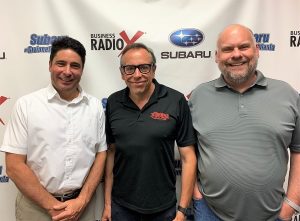
 Created in 1997 by Billy Messina and Ben Armstrong, veterans in the film and television industry,
Created in 1997 by Billy Messina and Ben Armstrong, veterans in the film and television industry, 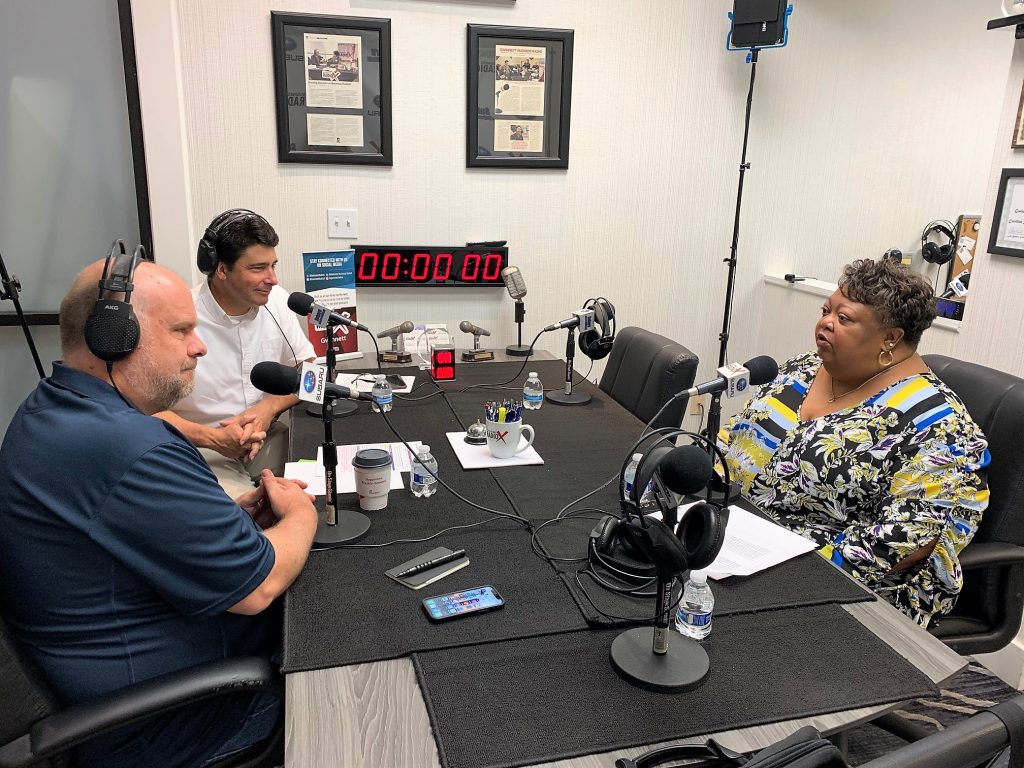

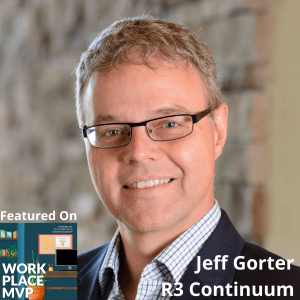

 In addition to serving as the host to the Workplace MVP podcast,
In addition to serving as the host to the Workplace MVP podcast, 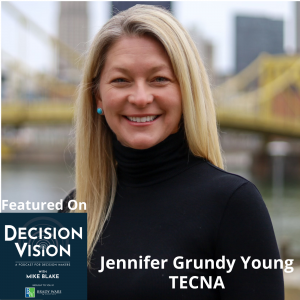




 Maurice Contreras started Volcanica Coffee after visiting his homeland in costa Rica. While he was there, he saw an opportunity to import great-tasting coffee from volcanic regions, such as inCosta Rica, to consumers.
Maurice Contreras started Volcanica Coffee after visiting his homeland in costa Rica. While he was there, he saw an opportunity to import great-tasting coffee from volcanic regions, such as inCosta Rica, to consumers.
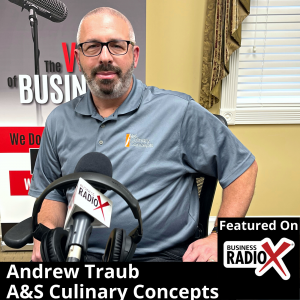

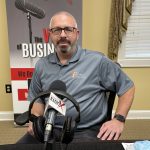

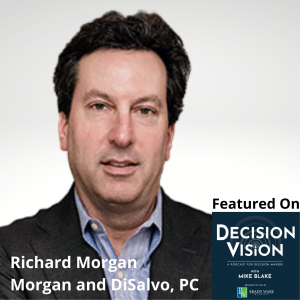 Decision Vision Episode 131: Should I Set up a Trust? – An Interview with Richard Morgan, Morgan and DiSalvo, P.C.
Decision Vision Episode 131: Should I Set up a Trust? – An Interview with Richard Morgan, Morgan and DiSalvo, P.C.

